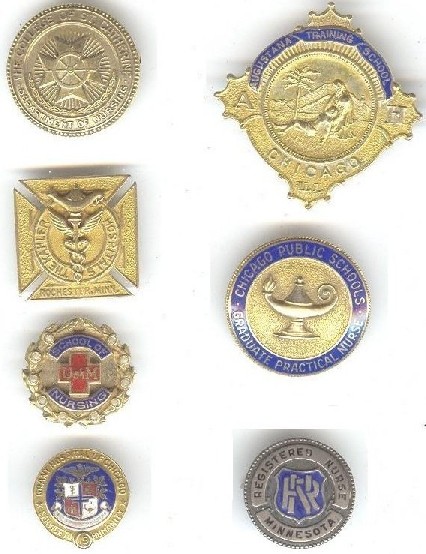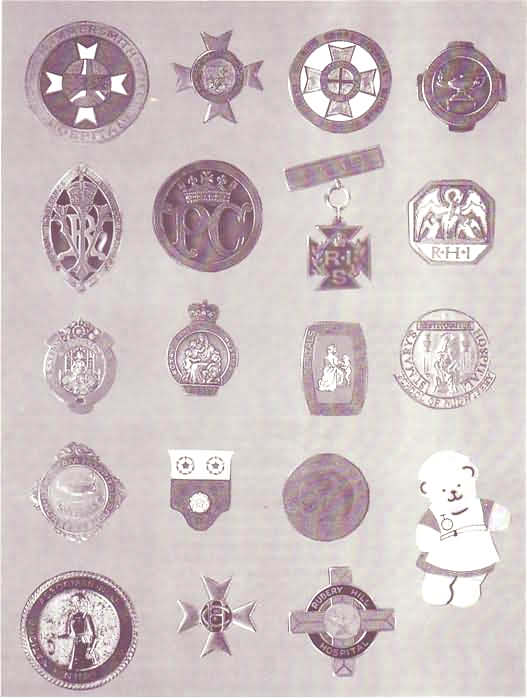The cap worn by a nurse is considered part of her nursing uniform. The nursing cap was introduced as part of the nursing uniform in the early history of nursing. The cap’s original purpose was to maintain a hygienic and clean look with the hair tucked away inside the cap. The nursing cap was a regulatory aspect of only the female nurse’s uniform, and covering the hair neatly was its only purpose. It’s to be noted that male nurses do not wear caps. The nursing cap is so much a part of nursing history that some nursing schools actually hold a capping ceremony, where new student nurses are presented caps before their training.
How Did The Nursing Cap Originate?
Florence Nightingale was the first nurse to wear a nursing cap in the 1800s. She based her cap on the head covering used in a nun’s habit, in an attempt to maintain tidiness. Therefore, the inspiration behind the nursing cap is the habit that’s worn by nuns. Nuns cover their hair completely from the forehead upwards. Two types of nursing caps are seen throughout nursing history. The first is a long cap that covers most of the nurse’s hair. The second is a short cap that sits neatly on top of the nurse’s hair. The second type of cap denotes a nurse’s professionalism while doing nothing to hide her hair. This short version of the nursing cap is prevalent in the United Kingdom and its former colonies.
The Nursing Cap Is A Universal Symbol Of Nursing
Even though nurses in many countries do not wear those head caps anymore, the nursing cap has become a symbolic aspect of the nursing profession. Over years, the white nursing cap sitting pertly on a nurse’s head has become a universally recognized symbol of nursing, care and kindness. Patients identify these aspects with the white nursing cap and the cap allows patients to distinguish between nursing and non-nursing staff at a hospital.
Present Day Use Of Nursing Caps
By the late 1980s, the use of nurses’ caps all but disappeared in the medical facilities of the United States, along with other nations. Nurses adapted to nursing scrubs, and the white nursing uniform with its symbolic cap was abandoned. Added to this is the fact that as more men entered the field of nursing, unisex scrubs came into vogue. However, you can still see nurses in crisp white uniforms with the symbolic nursing cap perched on their heads in several third world countries, and in countries where women still hold the majority in the nurse population.
History Of The Nursing Pin Or Badge
Nurses used to wear a nursing pin, or a badge made of a good quality metal such as gold or silver. This badge would denote the nursing school from which the nurse graduated. These badges are traditionally presented fresh nursing graduates by nursing faculty at what’s known as the ‘pinning ceremony’. The pinning ceremony is a symbolic welcome to the new nurses entering the nursing profession. Most of these pins have a symbolic meaning. Some of them represent the history behind the nursing program or the particular nursing school.
It is reputed that these nursing badges originated from the Maltese cross worn by Baron Vassiliev, Knight Commander of the Knights Hospitaller in the a 19th-century. The members of the Knights Hospitaller and Order of Saint Lazarus form significant historical contributors to the foundation of hospital standards. These members were the initial pioneers who researched care for communicable diseases such as syphilis, leprosy, and chronic skin diseases. They established a few hospitals to cater to the patients with these diseases during their period.
The Maltese Cross evolved into a badge of honor that was bestowed on those who provided exclusive services. These badges were therefore awarded to nurses, as nurses were much needed by society to perform essential care duties. These badges, or pins, recognized nurses as a step above ordinary folks, and gave them status as educated, trained and experienced in the field of caring.
Nursing Badges In The Present Day
Nursing badges or pins have evolved over time. The Maltese cross is not incorporated in the badges issued in some nursing institutions. Rather, these institutions award nursing pins containing the institution’s logo, or marks of the nursing organization or university affiliation. Nurses still wear the pin as part of their uniforms, but the nursing pin is not mandatory anymore in several countries such as the United States. The nursing pin is a badge of honor and pride, rather than a necessity.


